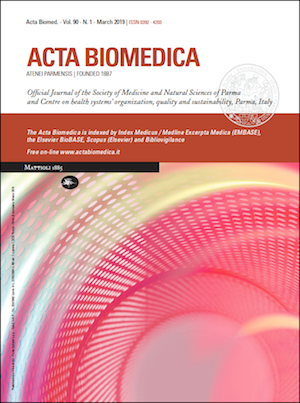Computer-assisted surgery in total knee replacement: advantages, surgical procedure and review of the literature
Keywords:
computer, TKR, knee, prosthesis, robot, knee replacement, technologyAbstract
Introduction: Total knee replacement (TKR) is one of the most frequent orthopaedic procedures performed every year. At the same time 20% of patients who underwent TKR are not satisfied with the outcome. The reasons are unknown; we think that a mechanical alignment beyond 3° of varus-valgus can represent the most important cause of failure of TKR and consequently patient dissatisfaction. Materials and Methods: Neutral mechanical alignment is the main goal in every TKR: this can be achieved through different tools, such as extramedullary and intramedullary guides, patient-specific instrumentation (PSI) and computer-assisted surgery (CAS). The aim of this review is to compare the different alignment techniques in TKR, to describe CAS procedure and CAS results in recent literature. Results: Regarding the intramedullary guide, there is an increased risk of fatty embolism; there are great limitations on its use, or even impossibility, in cases of bone deformity and sequelae of trauma. Regarding the extramedullary guide, it becomes more difficult to use in cases of great obesity or increased soft-tissue volume around the tibia. PSI for TKR has been introduced to improve alignment, reduce outliers, operation time and the risk of fatty embolism by avoidance of intramedullary canal violation. Recent randomized controlled trials and meta-analysis proved no advantage of PSI in improving mechanical axis and implant survivorship. Discussion: CAS has provided to be a useful tool in assisting the surgeon to achieve more accurate post-operative mechanical axis through precise and reproducible bone cuts and ligament balancing. Two meta-analyses definitively proved that CAS technique improves mechanical axis and implant survivorship and one recent meta-analysis demonstrated that CAS provides better mechanical alignment and higher functional scores at short-term follow-up.
Downloads
Published
Issue
Section
License
This is an Open Access article distributed under the terms of the Creative Commons Attribution License (https://creativecommons.org/licenses/by-nc/4.0) which permits unrestricted use, distribution, and reproduction in any medium, provided the original work is properly cited.
Transfer of Copyright and Permission to Reproduce Parts of Published Papers.
Authors retain the copyright for their published work. No formal permission will be required to reproduce parts (tables or illustrations) of published papers, provided the source is quoted appropriately and reproduction has no commercial intent. Reproductions with commercial intent will require written permission and payment of royalties.







